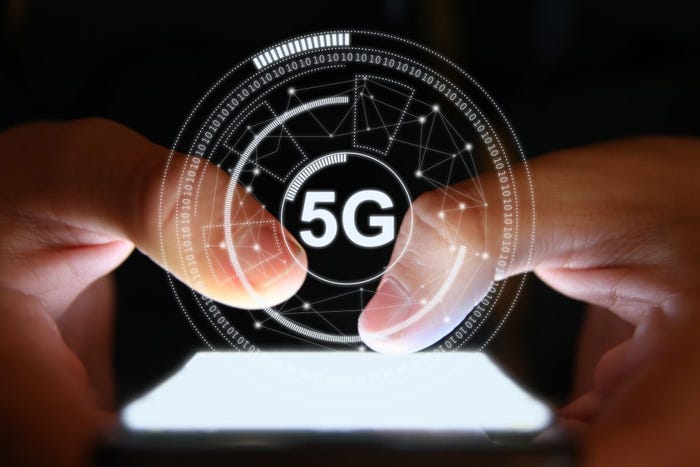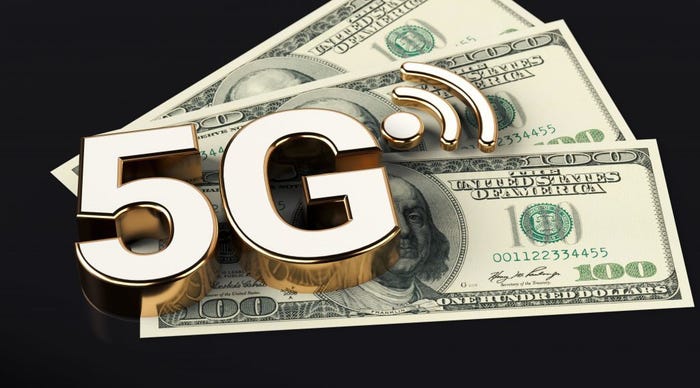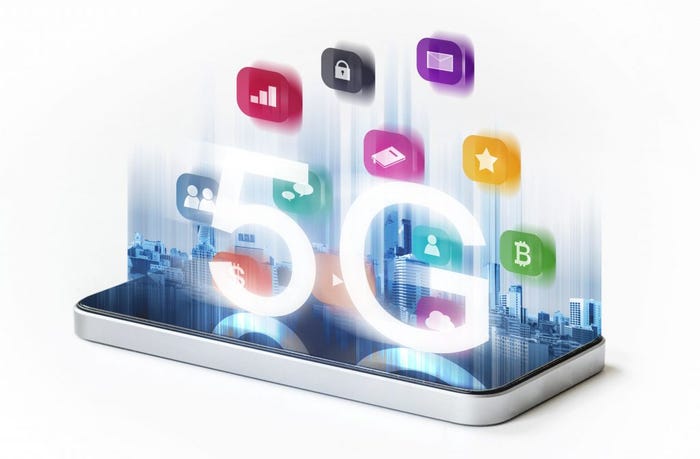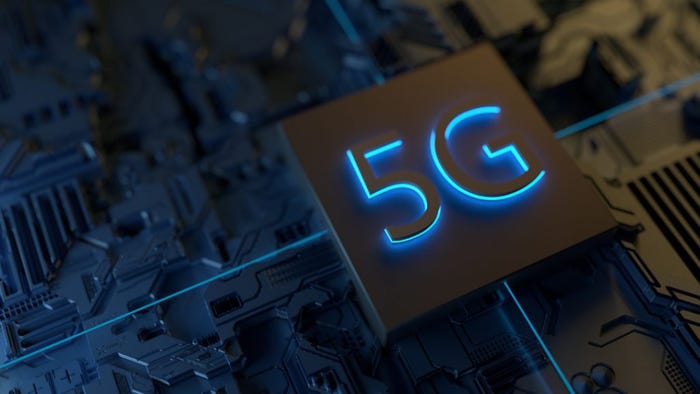What is 5G?What is 5G?
5G is the latest generation of mobile communications technology. But what, exactly, does it offer and why should you care? Read on to find out.
April 4, 2023

• What is 5G?
• Why should you care about 5G?
• The need for speed?
• The business case for 5G
• 5G as a platform
• What is the 5G killer app?
• The grim reality of 5G
• The science bit: 5G technologies
• The best thing since sliced 5G
• The end of the beginning of 5G
5G is the latest generation of mobile communications technology. But what, exactly, does it offer and why should you care? Read on to find out.
At Telecoms.com we’re constantly speaking to a wide range of industry experts about the latest topics, trends and technologies concerning the telecoms industry. In so doing, it can be easy to get preoccupied with details and specifics and lose sight of the bigger picture. Since even we sometimes struggle to define 5G, despite it dominating telecoms talk for years, we figure the rest of the world must wonder what all the fuss is about.
5G seems to mean different things to different people, so we decided to seek industry consensus on the definition and significance of it. We interviewed a number of experts from the telecoms operator, vendor and analyst communities, asked them all the same questions, and collated their answers below.
What is 5G?
Before we get into the specifics of what 5G does and why you should care, let’s first take care of the definition. “At a very basic level, 5G is faster and is lower latency than 4G,” says Phil Kendall, Executive Director, Service Provider Group at analyst firm TechInsights. “It is a lot more than just that, but you can’t go too wrong thinking about 5G as a quicker and more responsive wireless technology.”
Andy Purdy, Vice President at Huawei Technologies, a major supplier of telecoms equipment, elaborates: “5G is a new technology that enables vast amounts of data to travel faster than ever, by using higher frequency radio waves on new frequency bands,” he says. “The result is ultra-reliable connectivity to billions of devices with near zero waiting time whilst using 10x less energy per bit of data than 4G.”
On the matter of speed, Sylwia Kechiche, Principal Analyst, Enterprise, at network analytics firm Ookla, offers some insight. “The difference between 4G-LTE and 5G speeds was, on average, between 7-10 times faster, according to Speedtest Intelligence. Beyond speed, it offers greater capacity, allowing thousands of devices in a small area to be connected simultaneously, and lower latency (sometimes called ping), meaning a 5G network is more responsive.”
As you can see, the lower latency (time it takes for a signal to get from A to B) is a key new feature of 5G. How this will best be used has yet to be seen, but typical use-cases offered by the telecoms industry include long-distance remote control, autonomous vehicles and wireless access to the metaverse via augmented and virtual reality peripherals.
The same goes for the greater flexibility and access to the network that is also considered to be a key 5G innovation, thanks in part to the fact that true 5G, otherwise known as ‘standalone (SA)’, has only recently started its rollout. “5G standalone networks are on the horizon,” says Greg McCall, Chief Networks Officer, at UK operator group BT. “This will see the realisation of cutting-edge consumer use cases in VR and AR but also powerful enterprise use cases to support industry 4.0 objectives. This is thanks to network slicing and enhanced network edge capabilities.”
Ghyslain Pelletier, Senior Director, Engineering, at telecoms R&D specialist InterDigital, concurs. “When compared to 4G LTE, which focused on improving technologies and techniques to enable multimedia and video streaming, 5G promises to enhance network capabilities by providing better flexibility, versatility, and support for new services and industry verticals like V2X for automotive, network integration of AI/ML for automation, and ultra-reliability and low latency for 3D immersive services,” he said.
“It’s fair to say that 5G is more of a game-changer for the industry itself rather than for those customers using it,” concludes Dario Talmesio, Research Director at analyst firm Omdia. “Overall 5G will be remembered as the technology catalyst that changed absolutely every aspect of the telecom industry.”
So, the TL;DR answer to the headline question is: 5G is the latest generation of mobile connectivity technology that offers faster speeds, increased capacity, lower latency and greater network flexibility.
Why should you care about 5G?

That all sounds like a significant step forward, but does it make much difference for the average person? Kendall is sceptical. “To the extent that 5G is just a faster version of 4G then the average consumer probably doesn’t and shouldn’t care too much today,” he says. “In countries with good 4G connectivity, watching YouTube or Netflix on a six-inch screen has not been a user experience pain point that 5G needed to fix.”
As you would expect, the consumer-facing operators insist their customers should care. “The real reason consumers should care about 5G is not because of what it offers today, but about what it could offer in future,” says Paul Kells, Director of Network Strategy & Engineering at UK operator group Virgin Media O2.
“Going back just 12 years ago, the average mobile consumer was using around 200MB of data a month – today, that’s not far off what people use on average every single day. As our hunger for data continues to grow, and new use cases come to the fore, we need to be ready to meet those data needs head on.”
“It is the mobile technology that is best suited to support modern applications like live streaming and online gaming which have grown significantly in popularity,” says BT’s McCall. “But 5G is also enabling the creation of more sustainable mobile networks and is a key component is in closing the digital divide – helping connect more people and unlock economic growth.”
The need for speed?
Kendall concedes that, beyond the speed bump, there are other benefits for consumers in 5G. “There are perhaps more obvious advantages with 5G Fixed Wireless Access, which delivers a viable high-speed broadband experience for homes and businesses, either where the available wireline options offer poor performance or are expensive compared to a combined smartphone and broadband package from your 5G operator.”
And history has repeatedly shown that there is no upper limit to demand for technology improvements. 5G speeds will increase by another order of magnitude once base-stations supporting plentiful millimetre wave (mmWave) spectrum become widely deployed.
“5G mmWave is a key step in the 5G pathway and is gaining momentum in Europe,” explains George Tsirtsis, Senior Director for Technology at mobile chip designer Qualcomm. “The abundant spectrum available at mmWave frequency bands above 24 GHz can deliver extreme capacity, ultra-high throughput, and ultra-low latency.”
Padma Ravichander, CEO of Tecnotree, which makes software used to run networks, concurs. “We’ve only just begun to see the benefits of 5G technology, with early buildouts and use cases just being launched,” she says. “5G’s extraordinary speeds, greater capacity, and virtually unlimited connectivity will allow consumers to enjoy a smarter, more connected world.”
But Interdigital’s Pelletier cautions that the industry needs to do a better job of explaining to consumers why they should care about 5G. “The onus remains with operators to highlight the potential benefit of 5G for end consumers through 5G-enhanced services like VR, AR, cloud gaming, and immersive video, and for connected industries through use cases like industrial IoT and autonomous vehicles.”
The business case for 5G

So far, it has been easier to make the case for 5G to businesses and industry. “5G offers more immediate benefits to businesses today,” says VMO2’s Kells. “Whether that’s enabling vast numbers of connected machines to send and receive huge amounts of data continuously, or allowing organisations to create future-proof and customisable private networks in which every aspect of connectivity can be controlled – prioritising critical traffic, for example – 5G can meet their connectivity needs today and in future.”
The ability to set up secure, reliable and dedicated private networks, in which the airwaves are not shared with anyone else, has been the most tangible early use-case for 5G, along with fixed wireless access. “5G private networks will give businesses a viable and far more powerful alternative to wifi for connectivity,” says Mikael Schachne, VP Telco Market at BICS, a communications platform provider.
“Private networks offer more flexibility, control, and security. They have been the talk of the industry for a little while and have seen big tech brands like Amazon and Microsoft get involved in developing solutions. We’re already seeing industries like manufacturing, healthcare, transport, energy, and smart cities take advantage of private 5G networks to support sensitive professional use cases from security to immersive video conferencing and live streaming, immersive virtual tours, and remote inspections.”
5G as a platform
But 5G should offer a lot more to the business world than that. “5G is a platform that has the potential to be the cornerstone of the economic recovery boosting enterprise, as well as opening up opportunities by digitalizing industries such as manufacturing, healthcare, utilities, and more. 5G brings value for business transformation,” says Freddie Södergren, Head of Technology and Strategy, Networks, at Ericsson, a major supplier of telecoms equipment.
“5G will drive digitalization of industries and the next generation of industrial productivity, intelligent cities, smart grids, autonomous cars, and so on. We are still in the early days of this journey, and we start to see the initial impact in manufacturing.”
“5G can be the resilient and secure connection required for remote operations in hazardous environments such as container ports or mines,” says TechInsights’ Kendall. “5G can be the low-latency connection required for an XR application in a warehouse or logistics environment, or the real-time high-definition video link to allow a remote expert to support a less experience field worker complete a complex task.”
“5G SA will enable industries to do things like network slicing (allowing industrial automation to use dedicated network resources to guarantee reliability, latency, security, and quality of service),” notes Qualcomm’s Tsirtsis. Meanwhile Tony Eigen, VP Marketing of radio access solutions provider Baicells, warns that “we as an industry need to do more to educate the business world on the difference between 4G and 5G and which is the more appropriate technology to tackle a given problem.”
What is the 5G killer app?

If you’re finding 5G hard to pin down, you’re not alone. As you can see from the commentary so far, it’s a suite of innovations that offers different things to different people. In a final bid to establish some kind of consensus on what the point of 5G is, we asked people to identify the ‘killer app’ they associate with the technology.
“There is no 5G ‘killer app’, insists Qualcomm’s Tsirtsis. “5G supercharges all the 4G apps, allowing developers to gradually rely on better communications delivering new levels of content quality and levels of interactivity that were not feasible in earlier networks. At each mobile technology transition people have asked what the killer app is but with each ‘G’ change a new range of companies have grown that can only do so with the new ‘G’ platform.”
To be fair, it was a bit of a trick question, to which we expected answers along the lines of the above. But some people still gave it a go. “While there is not yet any equivalent of Uber or Airbnb for consumers, digital twins are turning out to be the killer app for 5G,” says Huawei’s Purdey. “Digital twins are exact online replicas of real-world machines or systems and allow full simulation of real-life processes.”
“Extended reality (XR) is the killer app because it will transform the way we experience and interact with digital content,” says Kelvin Chaffer, CEO at Lifecycle Software, which makes software for mobile operators. “XR includes virtual reality, augmented reality, and mixed reality. It is possible to deliver high-quality, immersive XR experiences in real-time. From gaming and entertainment to education and training, XR applications are enabling the development of more advanced and sophisticated XR experiences that were not possible before.”
“Quite possibly, the killer app could be remote learning,” concurs Ookla’s Kechiche. “Training and collaboration already benefit greatly from immersive reality. The ability to bring people together into an immersive 3D world that simulates real-world environments (such as a factory floor) helps to mimic what the workers/students would see or hear, thanks to VR models of the equipment.”
XR is also on the radar of Steve Alexander, CTO of Ciena, which makes technology used in fibre networks, but he stresses it’s a bit early to anoint it as a killer app. “5G is more about creating a wireless infrastructure that enables a series of ever more impactful use cases than it is about a single ‘killer app’,” he says. “Enterprises and consumers have heard a lot of talk about the augmented, virtual, and mixed reality apps driving 5G, and those are in active development but are just not ready yet.”
The grim reality of 5G
A more typical response is offered by Omdia’s Talmesio. “You must be joking! There is not such a thing, there has never been one and nobody wanted to find one. From a supply point of view, the ‘killer app’ is the ecosystem: manage and orchestrate the building blocks of a platform and make such platform available to as many partners as possible.”
This view is echoed by Södergren of Ericsson, whose company has invested heavily in opening up the 5G network to third parties. “As we see 5G platform for innovation, only time will show what developers will be able to do with it and if there will be one or more ‘killer apps’.” Meanwhile Dean Bubley, Analyst at Disruptive Analysis, highlights the most conspicuous successes to date. “So far, the ‘killer app’ for 5G has been more capacity for mobile broadband, and better-quality (and economics) for fixed-wireless access,” he says.
We leave the final word on 5G killer apps to TechInsights’ Kendall, who shares an anecdote that may explain why the concept is so contentious. “I remember presenting to a Nordic telco over 10 years ago about the opportunities that 4G offered (which were clearly less extensive than 5G) and having talked through a wide range of use cases with no obvious silver bullet our host concluded the session by saying ‘Perhaps the killer app is choice’.
“It was one of those humbling moments where we could have probably saved ourselves a lot of time if that had been said up front, rather than picking apart use case after use case, and I think it is even more valid of 5G than it is of 4G.”
The science bit: 5G technologies

If you’ve made it this far, maybe you’re wondering what new technologies enable the various 5G use-cases explored so far. This isn’t the place to get really deep into the weeds – the internet is littered with exhaustive whitepapers if that’s what you’re after – but Huawei’s Purdey offers a concise summary of the main innovations.
“Massive MIMO (Multiple Input Multiple Output) technology uses large antenna arrays to transmit and receive huge amounts of data simultaneously. This increases network capacity, meaning more devices can be connected in a given area.
“Beamforming technology focuses wireless signals directly at a specific device or location. This helps increase network efficiency and reduces interference. Millimetre wave allows faster data transfer rates and lower latency, albeit over a shorter distance.
“Network slicing facilitates multiple individual virtual networks within a larger network. Each virtual network can be optimized for a specific use case, enabling businesses to tailor their network to their specific needs.
“Edge computing allows data to be processed close to source, instead of transmitting it to a centralized data centre. This improves the performance of applications that require real-time data processing such as automated factories.”
That offers just a taste of the technological contortions the telecoms industry has gone through to bring you a bit more bandwidth and a bit less latency and there’s plenty more to it than that. “5G is also by far the most energy efficient of all the generations,” adds Ericsson’s Södergren. “It will be an enormous contributor to breaking the energy curve. By reducing network energy use, we can also help to reduce what is often businesses’ biggest operating cost.”
The best thing since sliced 5G
Of the innovations associated with 5G, network slicing seems to offer the greatest long-term potential. “With network slicing, mobile operators can carve out a dedicated slice of the network for specific use cases and deploy it in minutes,” says Kailem Anderson, VP of Portfolio and Engineering at Blue Planet, a software division of Ciena.
“This will mean they can monetise the network better, by selling dedicated high-bandwidth slices for things like eSports tournaments or major concerts in stadiums, and then turn those slices off when the events are done. Network slicing, with its various use cases, is one of the most important technologies in 5G, and we can expect operators to start deploying full slicing services in the next 12-18 months.”
Tecnotree’s Ravichander concurs: “5G core has the potential to change monetisation models,” she says. “Enabling network slicing can allow CSPs to shed the traditional one-size-fits-all model and differentiate themselves with offerings that share a physical infrastructure. This ability to charge customers more for parts, or slices, of a network where monetisation is underpinned by premium performance and value generation, creates a platform for innovation and monetisation models.”
The end of the beginning of 5G

If it wasn’t already clear, this investigation into the nature of 5G will have revealed the dilemma each new generation of technology presents to the telecoms industry. On one hand it offers a one-in-a-decade opportunity to generate publicity and kickstart a new upgrade cycle for both networking kit and consumer devices. But that hype is very difficult to live up to, which inevitably results in a degree of back-pedalling.
“As with all big generational releases, the fanfare and hype at the start of the cycle is very rarely met by the initial release and deployment,” says Kendall of TechInsights.
“We are still in the early days of the 5G technology transition,” says Ericsson’s Södergren. Monetizing 5G requires building out networks in mid-band. Today, only 20% of sites are upgraded to mid-band, so the 5G build-ups need to continue to bring sufficient 5G coverage needed for the enhanced user experience, and for communications service providers fully benefiting from the technology.
“I think the most important thing for your readers to realize is that the roll-out is not complete,” concurs Ciena’s Alexander. “It’s a lot simpler to have your device display a 5G symbol because it may be using new frequencies that were assigned to 5G than it is to deliver a complete 5G experience.”
It’s easy to criticise the marketing departments of various companies across the telecoms industry for their over-exuberance, and at Telecoms.com we often do, but at the end of the day they’re just doing their jobs. On the other hand it’s incumbent on those same companies to delivery on those rash promises sooner or later.
“5G is not a single technology step-change,” says Qualcomm’s Tsirtsis. “It is a long pathway of incremental expansion.” We’re only three years into a ten-year cycle and previous generations only really started delivering in their more mature forms. So while we now have a clearer sense of what 5G is, it may still be some time before it has a significant impact on the wider world.
Get the latest news straight to your inbox. Register for the Telecoms.com newsletter here.
Read more about:
Tech ExplainersAbout the Author
You May Also Like









.png?width=300&auto=webp&quality=80&disable=upscale)


_1.jpg?width=300&auto=webp&quality=80&disable=upscale)